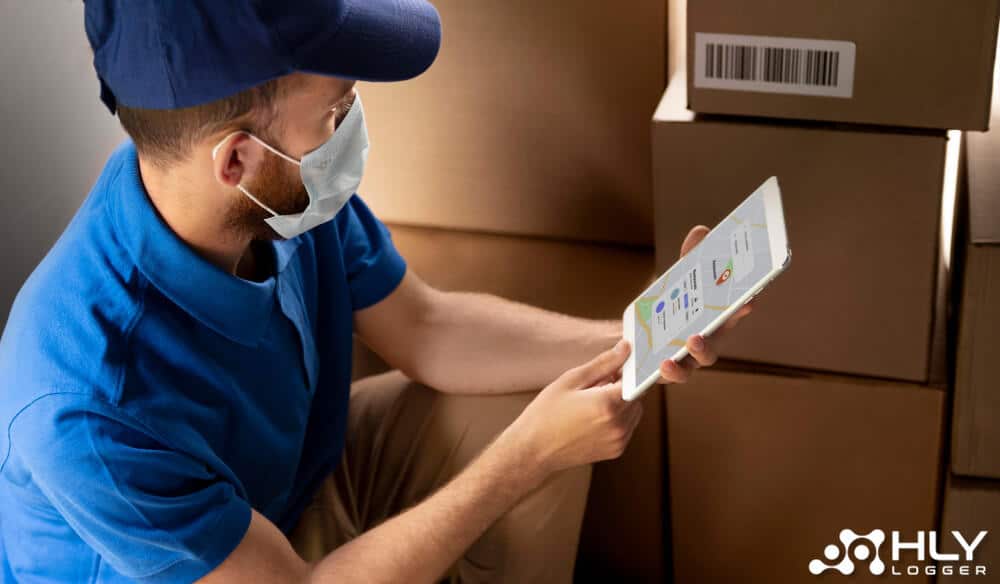Real-time logistics tracking refers to monitoring the movement of goods across the supply chain. For companies operating in the logistics sector, this technology is critical for enhancing operational efficiency and providing complete visibility into shipment status. It also enables businesses to collect the necessary data to overcome potential obstacles and optimise delivery routes. Additionally, companies can design strategies to manage their fleets more effectively and in a more structured way.
Contents
GPS and RFID: The Foundations of Real-Time Logistics Tracking
The success of real-time logistics tracking relies on several key technologies that work together to monitor and manage goods in transit. One of the primary technologies used in these systems is the Global Positioning System (GPS).
GPS has become a crucial component of logistics tracking systems because it provides precise location data. With GPS, companies can monitor the position of vehicles, fleets, or shipments in real-time. Beyond tracking location, this technology also helps businesses design more efficient delivery routes, avoiding congestion and reducing delays.
Another important technology supporting real-time logistics tracking is Radio Frequency Identification (RFID). RFID uses radio waves to identify and track goods automatically. Each item or package with an RFID tag can be quickly identified as it passes through scanning points. This technology is beneficial for tracking goods in warehouses and distribution centres, ensuring that items sent and received match the orders.
Leveraging IoT and AI for Enhanced Visibility
Integrating the Internet of Things (IoT) further enhances these technological components. Interconnected IoT devices allow businesses to monitor various aspects of shipments, such as temperature, humidity, and the condition of goods.
This is especially critical for industries requiring special handling, such as food, pharmaceuticals, and chemical products. In these systems, sensors are deployed to detect movement, provide alerts when issues arise with the goods being shipped, and monitor other specific conditions based on the appropriate sensor type.
IoT integration is often combined with artificial intelligence (AI) technology, which analyses data collected from logistics tracking to predict delivery trends and boost efficiency. Machine learning algorithms can help optimise delivery routes and reduce travel times based on historical data and current traffic conditions. AI can also provide automated recommendations to address obstacles during the shipping process.
Cloud Computing: Centralized Data and Scalability
The data generated by real-time logistics tracking systems is managed using cloud computing technology. Cloud platforms enable quick access to data from various locations, simplifying centralised monitoring. This technology also provides scalable and flexible storage capacity, allowing companies to store vast amounts of data efficiently and retrieve it as needed.
Benefits of Real time Logistics Tracking in Delivery Accuracy
Implementing real time logistics tracking offers companies significant benefits. Real-time monitoring helps identify problem points or delays in the supply chain, enabling businesses to take swift action to address operational challenges, such as traffic congestion or vehicle breakdowns.
Additionally, real-time tracking supports route optimisation, reducing shipping time and costs while providing complete visibility into the position and condition of goods in transit. This transparency ensures greater security for goods during transport. Immediate access to location data allows companies to quickly detect and manage potential security risks, such as theft or loss, which is especially critical for high-value shipments requiring strict oversight.
Real-time logistics tracking also helps reduce operational costs associated with fleet management and goods transportation. More efficient route planning minimises delays and improves monitoring, which reduces fuel consumption, vehicle maintenance costs, and expenses related to handling damaged or lost goods.
Furthermore, decision-making processes shift from intuition or experience to being data-driven. Logistics tracking technology provides crucial data on various shipping aspects. It allows businesses to identify patterns or trends in their operations, such as frequently delayed routes or areas with high delivery demand. Proper data analysis enables companies to make informed decisions to improve performance and productivity.
Real-time tracking also helps logistics companies monitor the utilization and performance of their vehicle fleets. This information is invaluable for optimising vehicle maintenance schedules, managing fuel usage, and minimising the risk of vehicle breakdowns that could disrupt operations. Enhanced fleet management allows businesses to cut maintenance-related costs and extend the lifespan of their vehicles.
Logistic Tracker Manufacturer
One notable example of a company providing real-time logistics tracking solutions is HLY Technology. HLY Technology offers various IoT-based devices and data loggers designed for environmental monitoring, specifically in cold chain logistics.
Our flagship products feature GSM, 3G, 4G, and NB-IoT technologies to ensure real-time temperature, humidity, and location monitoring during transportation. These devices are tailored for sectors such as pharmaceuticals, food, and industrial applications, providing continuous data for accurate supply chain management.
HLY Technology’s standout products include the GSM and NB-IoT-based data logger series, such as the M104 and M502 models. These devices offer real-time monitoring of temperature and humidity conditions, making them ideal for cold chain applications. They are particularly well-suited for tracking shipments that require continuous reporting and oversight.
Conclusion
In today’s competitive digital landscape, adopting real-time logistics tracking is no longer optional but necessary for businesses seeking to remain competitive. This technology enables companies to monitor goods’ position, condition, and status in real time, improving operational efficiency, ensuring timely deliveries, and enhancing customer satisfaction. Technologies like GPS, RFID, IoT, and AI are pivotal in supporting logistics tracking systems and providing actionable insights to help companies make better decisions.
For logistics companies striving to strengthen their position in the ever-growing market, implementing real-time tracking technology is essential to delivering high-quality services and achieving sustainable growth.

